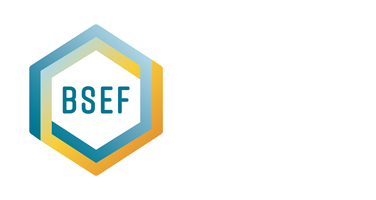At BSEF, one of our key missions is to keep Europe and its people fire safe. We achieve this by supporting the safe use of Brominated Flame Retardants (BFRs) across various sectors, including electronics, automotive, building & construction, furniture, and transportation. Our commitment extends beyond fire mitigation—it’s about safeguarding lives and ensuring a resilient future.

Fire Safety: Protecting Europe Together
Three Key Areas for Progress in 2024 onwards
1. Prevention
Recent tragic fires serve as a stark reminder of the importance of fire prevention. We advocate for integrating fire prevention measures into social protection frameworks. From energy-efficient buildings to fire-resistant Electronics & furniture, our focus is on reducing risks and slowing the spread of fires.
-
- Integrating Fire Prevention Measures: We work closely with policymakers to embed fire safety practices into social policies related to energy, poverty, and disability. In this respect, BSEF proudly stands among the co-signatory organizations of the Fire Safety Manifesto for 2024-2029. This manifesto calls upon European institutions to prioritize fire safety in buildings and develop a consistent strategy with Member States. Especially crucial are the current fire safety unmitigated risks and the new challenges posed by the European Green Deal’s focus on decarbonizing buildings[1].
- Leading Research and Innovation: Our commitment extends to sustainable research and innovation, ensuring circular solutions that prevent fires effectively while contributing to the protection of the environment.
[1] https://www.europeanfiresafetyalliance.org/news/european-fire-safety-sector-launches-support-campaign-calling-for-a-eu-fire-safety-strategy/
2. Double Regulation
Avoiding double regulation is crucial. It occurs when a substance is regulated by more than one piece of legislation, leading to affected industries suffering from unnecessary burdens for the same issue multiple times. As proud signatories of the Antwerp Declaration for a European Industrial Deal, we champion evidence-based decision-making that aligns with industrial reality.
-
- Streamlining Regulations: We advocate for harmonizing regulations to prevent overlapping requirements. As in line with the One Substance, One Assessment principle proposed by the European Commission.
- Balancing Industry Needs: Our goal is to create an environment where businesses thrive without unnecessary compliance challenges.
- Managing under REACH[2]: We support regulating substances like BFRs under the EU’s established REACH Regulation to ensure effective and efficient compliance across European markets.
[2] https://echa.europa.eu/regulations/reach/understanding-reach
3. Risk-Based Assessments
To avoid overregulation and ineffective risk management of chemicals, the EU must support risk-based assessments. Unlike hazard-based approaches, which judge substances solely on their inherent properties, risk-based assessments consider actual usage and exposure scenarios. This methodology ensures that essential chemicals are evaluated in the context of their real-world applications, providing a balanced view of their safety and utility, and ensuring their safe use.
-
- Maintaining high levels of Fire safety : Brominated Flame Retardants are an important tool for society, protecting us from the risk of fire by inhibiting the spread of flames. Losing these beneficial substances would thus deprive us of effective fire protection elements, which crucially prolong escape time – for us to reach safety and for firefighters to intervene.
- Preventing Regrettable Substitution : When policies focus exclusively on hazards, we risk replacing substances with alternatives that could be equally or more harmful. This phenomenon, known as “regrettable substitution,” undermines safety and efficiency. By adopting risk-based assessments, we ensure that replacements are genuinely safer and fit for purpose.
- Mitigating Supply Chain Disruptions : A wide range of potential issues can arise when a key substance is banned or restricted. This includes challenges in manufacturing, increased costs, delays in product availability, and regulatory misalignments that can hinder trade and logistics. As a consequence, companies may encounter substantial struggles to maintain the safety, performance, and availability of many products critical to various industries and consumers.


